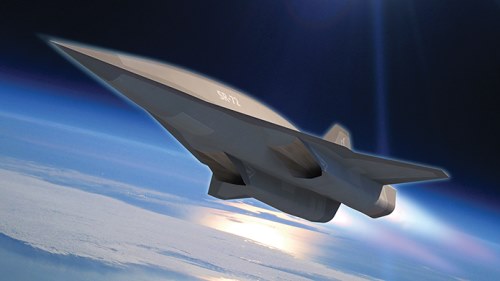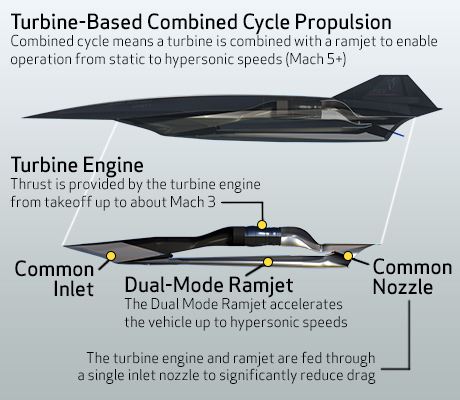Almost 40 years ago, the U.S. Air Force flew the record-breaking SR-71 Blackbird aircraft from New York to London in less than two hours at a speed three times the speed of sound.

SR-71 Blackbirds. (Image via Lockheed Martin)
The SR-71 has held on to its altitude and speed records, but that may all change now that Lockheed Martin is working on a hypersonic aircraft that will fly at twice the speed of the 1976 aircraft.
The SR-72 aircraft has been coined the “Son of Blackbird” and is expected to be an unmanned aircraft that can reach speeds six times faster than the speed of sound.

The SR-72 spy plane. (Image via Lockheed Martin)
The company envisions that the spy-craft would be so fast that an enemy would never be able to catch it.
Brad Leland, Lockheed Martin program manager of Hypersonics, predicts that this kind of speed will be a game changer and a great aviation advantage.
“Hypersonic aircraft, coupled with hypersonic missiles, could penetrate denied airspace and strike at nearly any location across a continent in less than an hour,” said Leland.
Is it really going to happen?
Lockheed Martin suggests that this kind of plane can be a reality by 2030 and cost under $1 billion to create. The company has been working with Aerojet Rocketdyne to bring the concept to life. Together, they’ve been developing a way to integrate an off-the-shelf turbine with a supersonic combustion ramjet air breathing jet engine that could power the craft to its estimated potential.

Components in achieving hypersonic speeds. (Image via Lockheed Martin)
According to NBC News, they’ve been testing components for the potential aircraft, but are waiting on additional funding in order to move ahead with larger-scale demonstrations of the technologies.
This won’t be the first hypersonic aircraft that Lockheed Martin has created. The company also worked with the Defense Advanced Research Projects Agency to create a rocket-launched Falcon Hypersonic Technology Vehicle 2 (HTV-2), which helped them to understand the main challenges of hypersonic flight: aerodynamics, aerothermal effects, and guidance, navigation and control.
That vehicle reached a speed of 13,000 mph. Now, the companies will apply the lessons learned in that launch to the SR-72 to create this spy plane.
Advertisement
Learn more about Electronic Products Magazine





